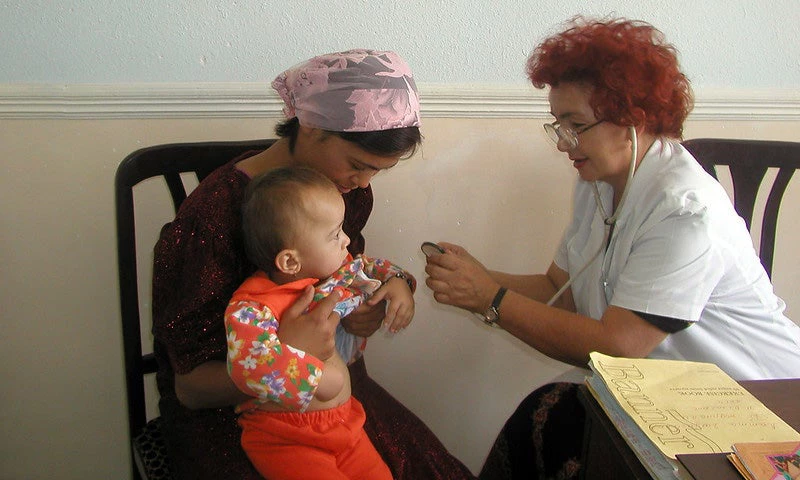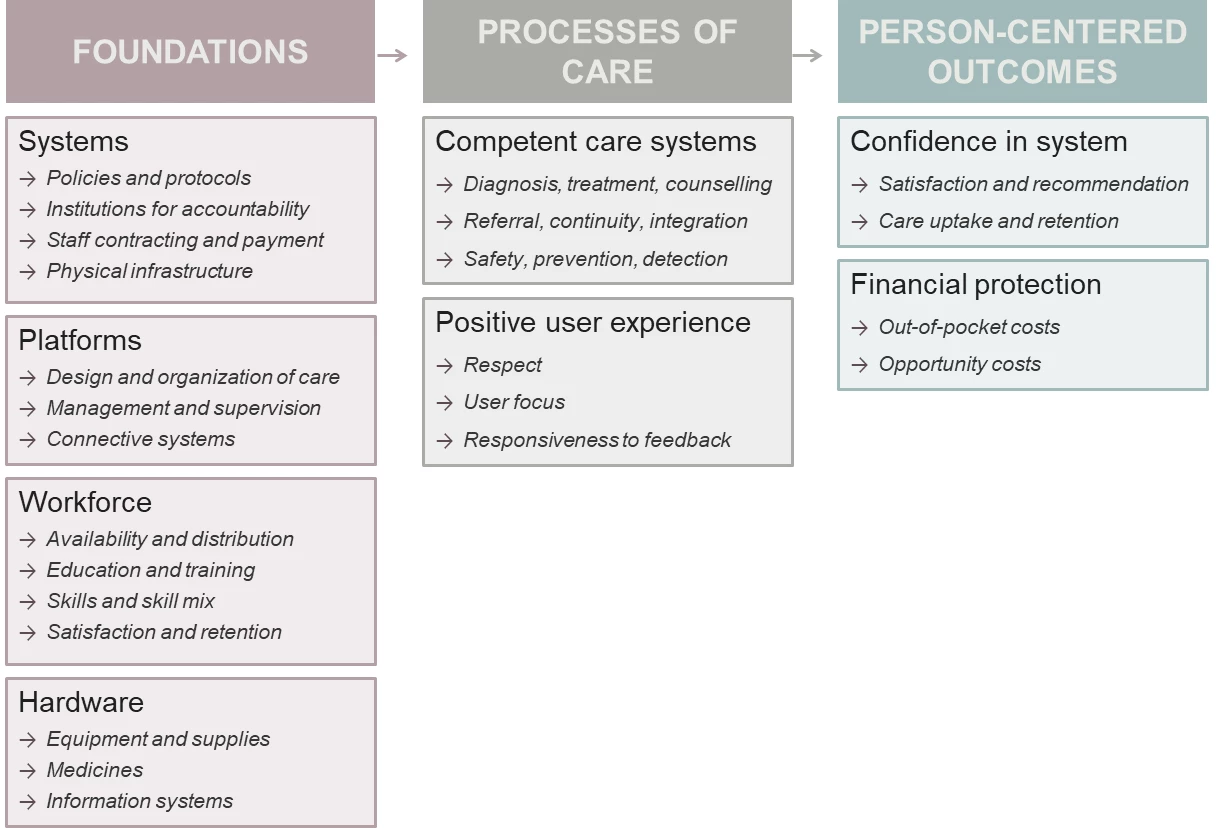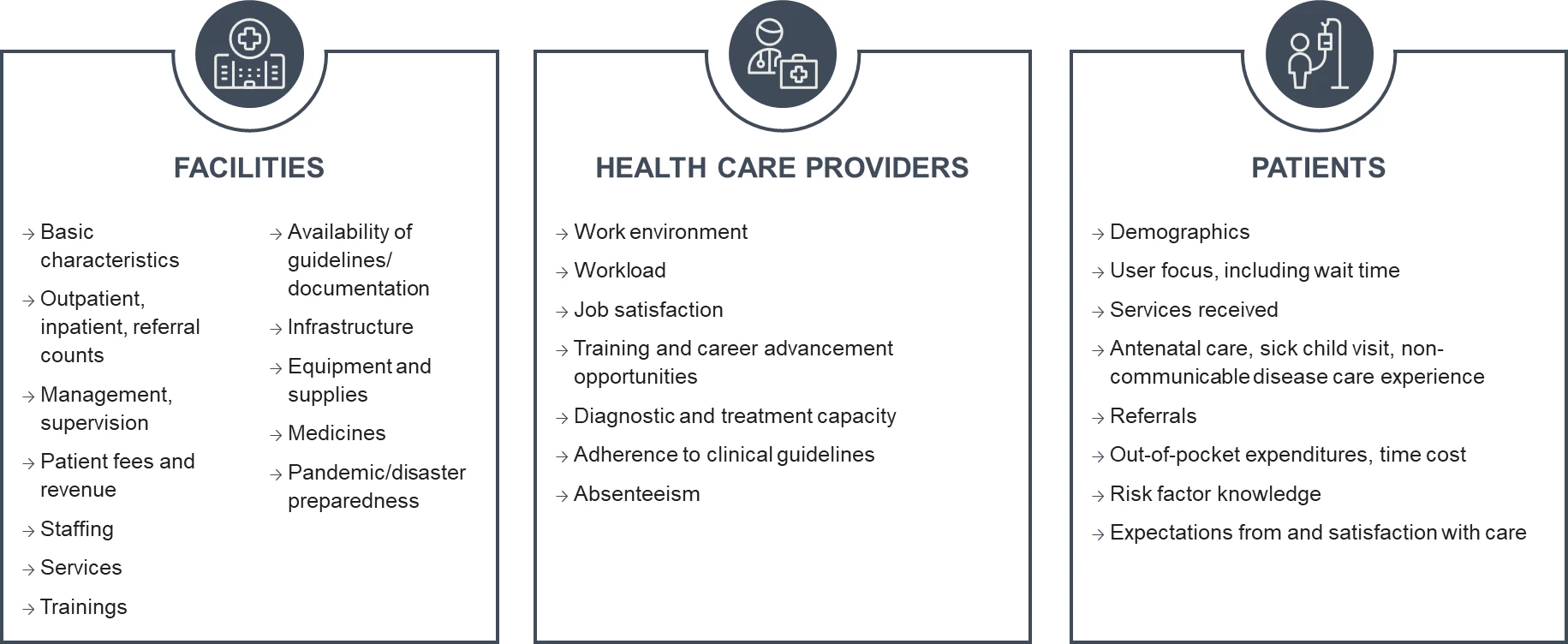 General practitioner examines baby
General practitioner examines baby
During crises as well as in ordinary times, strong primary health care (PHC) systems promote and preserve health. The cost-effective provision of essential services also delivers economic benefits at both individual and population levels and prevents avoidable emergencies.
In the wake of COVID-19, countries have a unique chance to realize the Universal Health Care aspirations of the global movement that started with the Declaration of Alma-Ata in 1978 and was reaffirmed in the Declaration of Astana 2018. The declarations envision primary health care systems as “the cornerstone of a sustainable health system for universal health coverage (UHC) and health-related Sustainable Development Goals.” Central to this agenda is the recognition that effective and robust measurement of how well primary care systems perform is key for improvement and accountability.
But how can we reliably and comprehensively measure the performance of PHC systems in delivering services that respond to the evolving needs and expectations of the population?
Measuring Primary Health Care Service Delivery
Large-scale assessments of health service delivery include the World Bank’s Service Delivery Indicators (SDI) health surveys, USAID’s Service Provision Assessments and WHO’s Service Availability and Readiness Assessments. These three large-scale health service delivery surveys focus largely on maternal and child health and communicable diseases, and on basic inputs such as availability of infrastructure, equipment, and supplies.
Three global reports on health system quality published in 2018 highlighted significant gaps in the measurement of quality of care. The reports emphasized the importance of assessing care processes and outcomes rather than simply focusing on structural inputs. For example, are health facilities prepared to address future pandemics and climate-driven disasters? Are health care providers satisfied by their work or are they burned out? Do patients face long wait times before they receive the services they need and are they treated respectfully by facility staff?
New Tools to Inform Stronger Primary Health Care Systems
The new generation of the SDI health survey boldly responds to the call for innovation in measurement to yield insights needed to build stronger primary health care health systems. We built upon previous frameworks for high quality health systems and identified key information needed to comprehensively assess the quality of primary health care services delivered to users.
Figure 1 below shows that solid structural foundations enable high quality processes of care. Together, they boost users’ confidence in the health system and improve their financial outcomes. Better health is of course one of the primary goals of high-quality primary care, but health facility surveys like the SDI are unable to accurately measure the health impact of service delivery (which is why the assessment omits this outcome). To yield such insight, outcome data at population level, available through national information systems and household surveys, can complement detailed supply-side data from the SDI.
Figure 1: Framework for measurement of primary health care service delivery
The new framework forms the backbone for the methodological refresh of the new generation SDI health survey, which builds on current literature and global guidance on ways to measure PHC systems and quality of care.
The content of the revamped survey reflects a comprehensive review of other validated survey tools, clinical guidelines, burden of disease, as well as innovations in user satisfaction measurement, among others. Through intensive consultations with stakeholders and global experts, we ensured that the resultant survey tools are better aligned with the agenda and priorities of national health system improvement and measurement. The updated SDI health survey also remains compatible with previous iterations of the assessment. Figure 2 displays the content of the refreshed SDI health survey.
Figure 2: Content of the new SDI health survey’s facility questionnaire, health care provider questionnaire, and patient questionnaire
Measurement for Action and Accountability
Many countries are prioritizing strengthening primary care systems as the foundation of strong health systems. A revolution in the measurement of health service delivery will fuel momentum for primary health care reimagination. Specifically, scaling up this comprehensive measurement of primary health service delivery is urgently needed to ensure that policies and investments are guided by evidence, and also to assess their impact. At this critical moment, it is essential to institutionalize a culture of valuing and utilizing data and measurement. The new SDI health survey is a tool that empowers countries, development partners, researchers, policymakers and citizens to use data to hold systems accountable and ensure that they work for those they intend to serve. More information on the new generation of the SDI health survey, including on design and implementation, is available here.
Learn more:
• Report: Walking The Talk - Reimagining Primary Health Care
• Service Delivery Indicators: Health Survey Refresh - Fact Sheet





Join the Conversation